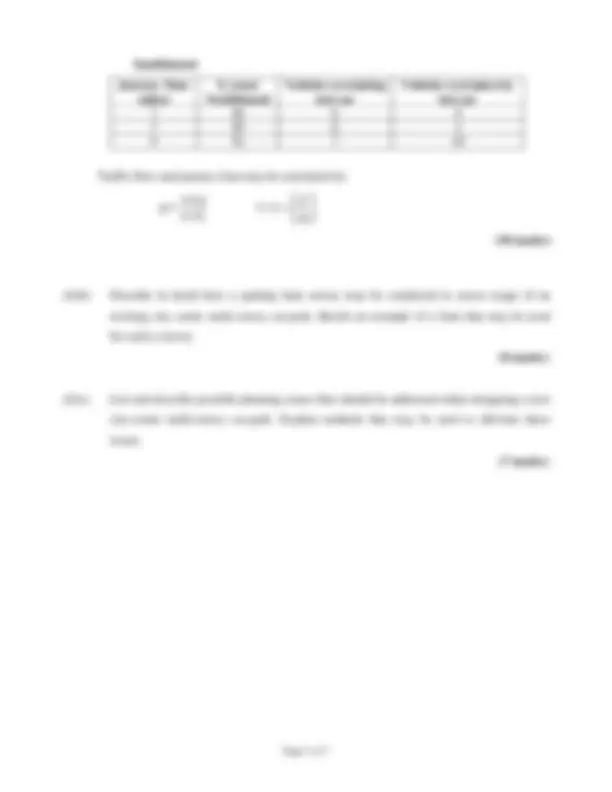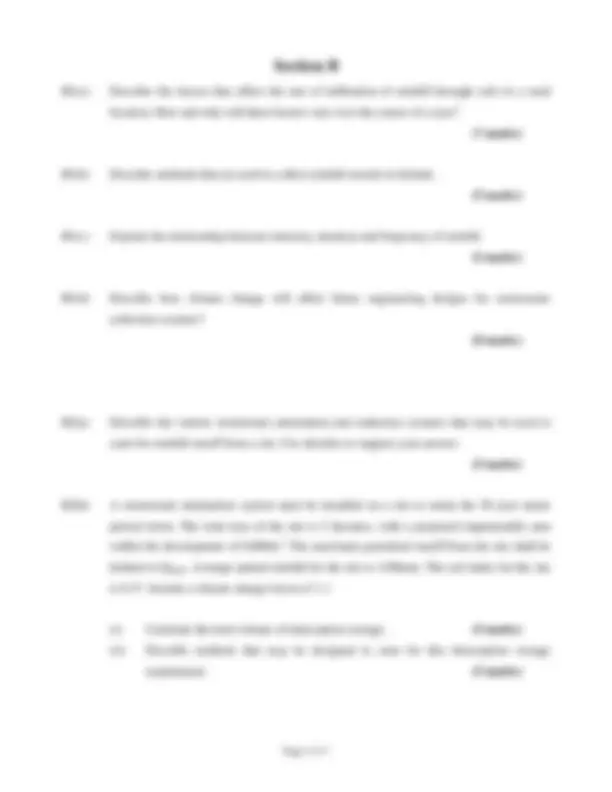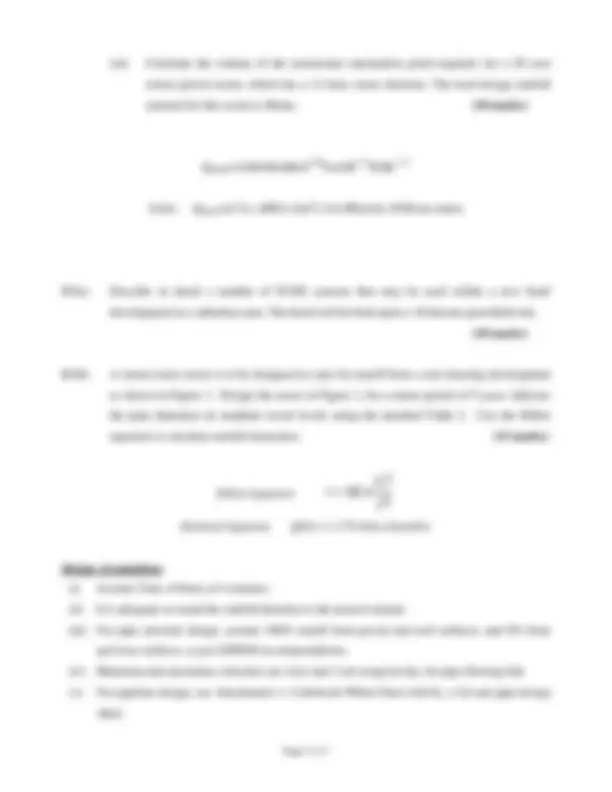





Study with the several resources on Docsity

Earn points by helping other students or get them with a premium plan


Prepare for your exams
Study with the several resources on Docsity

Earn points to download
Earn points by helping other students or get them with a premium plan
Community
Ask the community for help and clear up your study doubts
Discover the best universities in your country according to Docsity users
Free resources
Download our free guides on studying techniques, anxiety management strategies, and thesis advice from Docsity tutors
Main points of this past exam are: Transport System in Ireland, Fatal Road Accidents in Ireland, Light-Rail System, Demand-Side Traffic Congestion, Public Bus Systems, Moving Observer Method, Calculate Traffic Flow, Parking Beat Survey
Typology: Exams
1 / 7

This page cannot be seen from the preview
Don't miss anything!




Semester 2 Examinations 2010/
Module Code: CIVL
School: Building and Civil Engineering
Programme Title: Bachelor of Engineering in Civil Engineering
Programme Code: CCIVL_7_Y 3
External Examiner(s): Ms M Kyne, Mr JT Murphy Internal Examiner(s): Mr TL O’Driscoll
Instructions: Answer two questions from each section. All questions carry equal marks.
Duration: 2 hours
Sitting: Autumn 2011
Requirements for this examination:
Note to Candidates: Please check the Programme Title and the Module Title to ensure that you have received the correct examination paper. If in doubt please contact an Invigilator.
A1(a). Describe the methodology used when conducting a project appraisal for a new public transport system in Ireland. Include details of the different criteria that must be used when conducting the analysis. (15 marks)
A1(b) What are the primary factors which lead to fatal road accidents in Ireland? What systems have been put in place in Ireland to reduce these fatalities in recent times? (10 marks)
A2(a) Describe methods may be used when designing a new light-rail system, to maximise passenger numbers, and reduce car use in an urban area. (10 marks)
A2(b) Discuss demand-side traffic congestion management methods that may be used to reduce traffic congestion in cities. (8 marks)
A2(c) Explain the different public bus systems that may be used in an urban location. What are the advantages and disadvantages of each system? (7 marks)
A3(a) Given the data below, use the Moving Observer Method to calculate traffic flow and average speed in each direction over a 5km stretch of road. Three test runs were made in each direction.
Northbound Journey Time (mins)
X count Southbound
Vehicles overtaking test car
Vehicles overtaken by test car 7 82 7 3 8 90 8 5 8 87 6 4
B1(a) Describe the factors that affect the rate of infiltration of rainfall through soils in a rural location. How and why will these factors vary over the course of a year? (7 marks)
B1(b) Describe methods that are used to collect rainfall records in Ireland. (5 marks)
B1(c) Explain the relationship between intensity, duration and frequency of rainfall. (5 marks)
B1(d) Describe how climate change will affect future engineering designs for stormwater collection systems? (8 marks)
B2(a) Describe the various stormwater attenuation and soakaway systems that may be used to cater for rainfall runoff from a site. Use sketches to support your answer. (5 marks)
B2(b) A stormwater attenuation system must be installed on a site to retain the 30 year return period storm. The total area of the site is 5 hectares, with a proposed impermeable area within the development of 9,000m^2. The maximum permitted runoff from the site shall be limited to QBAR. Average annual rainfall for the site is 1100mm. The soil index for the site is 0.37. Include a climate change factor of 1.1.
(i) Calculate the total volume of interception storage. (5 marks) (ii) Describe methods that may be designed to cater for this interception storage requirement. (5 marks)
(iii) Calculate the volume of the stormwater attenuation pond required, for a 30 year return period storm, which has a 12 hour storm duration. The total design rainfall amount for this storm is 48mm. (10 marks)
Units: QBAR (m^3 /s); AREA (km^2 ); SAAR(mm); SOIL(no units)
B3(a) Describe in detail a number of SUDS systems that may be used within a new hotel development in a suburban area. The hotel will be built upon a 30 hectare greenfield site. (10 marks)
B3(b) A storm-water sewer is to be designed to cater for runoff from a new housing development as shown in Figure 1. Design the sewer in Figure 1, for a return period of 5 years. Indicate the pipe diameters & manhole invert levels using the attached Table 2. Use the Dillon equation to calculate rainfall intensities. (15 marks)
Dillon Equation (^35) p^15 t
Rational Equation Q(l/s) = 2.78 A(ha) I(mm/hr)
Design Assumptions (i) Assume Time of Entry of 4 minutes. (ii) It is adequate to round the rainfall duration to the nearest minute. (iii) For pipe network design, assume 100% runoff from paved and roof surfaces, and 0% from pervious surfaces, as per GDSDS recommendations. (iv) Minimum and maximum velocities are 1m/s and 3 m/s respectively, for pipe flowing full. (v) For pipeline design, see Attachments 1: Colebrook White Chart with Ks = 0.6 and pipe design sheet.